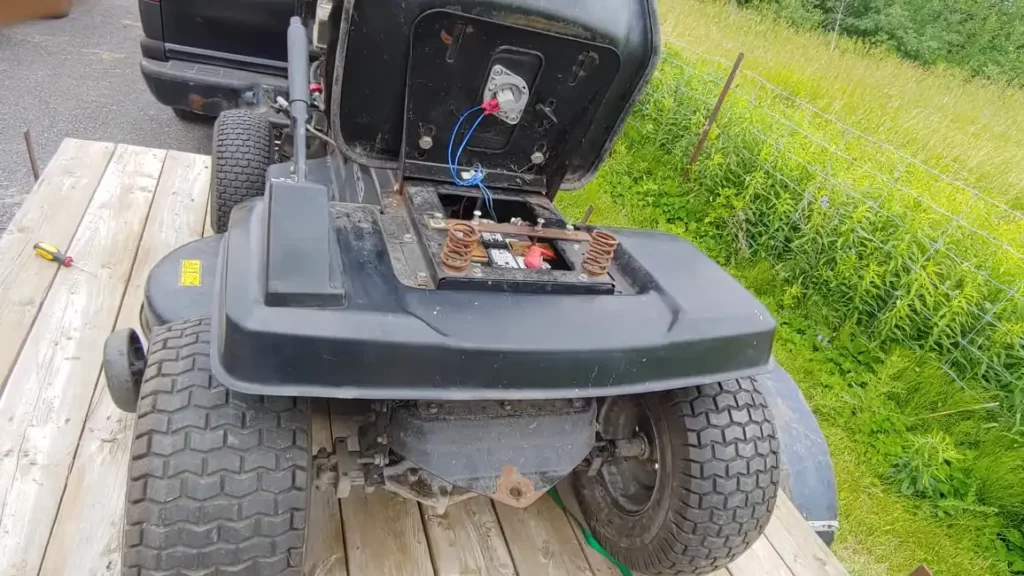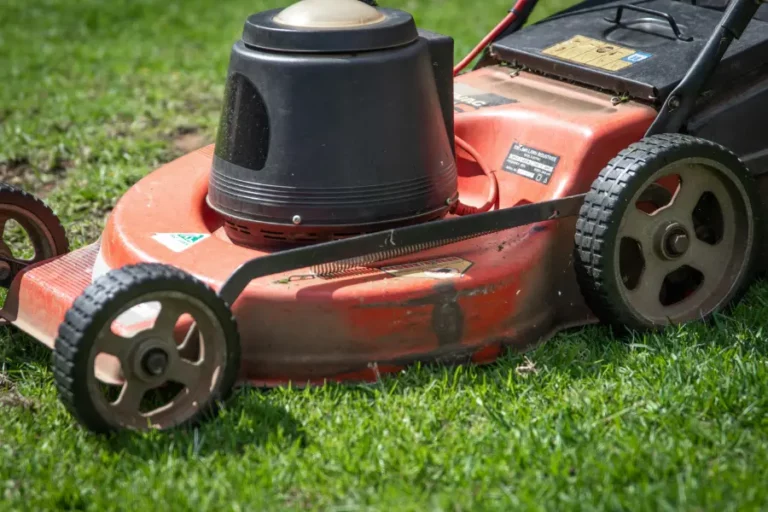Why My Mower Dies When Brake Released? (Solutions Added)
If you own a riding lawn mower, you may have encountered a frustrating issue where the engine dies immediately after releasing the brake.
Mower dies when brake released problem can be caused by a variety of factors, but the most common culprit is a faulty seat switch. Besides, clogged air filters, bad ignition and clogged carburetor are also might be the culprit here.

What to Do Do If My Mower Dies When Brake Released?
Here are the detailed explanations of why your mower dies when you release the brake, and some fixes that you can do all by yourself:
1. Seat Switch:
The seat switch is an important safety feature in riding lawnmowers. It is designed to shut off the engine when it doesn’t detect an operator sitting on the seat. This prevents the mower from moving without a driver and reduces the risk of accidents.
A bad seat switch can stop your mower engine whenever it wants. When the switch gets worn out or it has rust on it, then it makes the mower stop whenever the brake is released.
Fix:
Remove the plastic cover on the switch. Look for any damage to the switch, such as rust, broken wires, or loose connections. Use a multimeter to check precisely.
Consider disabling the safety switch to test your mower’s function. Then replace the switch if you see any damage.
To change the switch:
- Remove the spark plug. Typically, it is under the seat. After that, use a screwdriver to remove the wire. Disconnect the switch’s wire.
- Remove the old switch and install the new switch. Make sure you secure the bolts and reconnect the wirings.
- If the seat switch passes all the resistance tests, the issue may lie with a short in the wire harness. Check the wire harness for any signs of damage, such as exposed wires or frayed insulation. If you find any damaged wires, repair or replace them as necessary.
- If you find this very tough, consider calling an expert to change the seat switch.
2. Spark Plug:
One of the reasons can be a faulty and dusted spark plug. If it has a debris on it, your mower dies when brake released. And if the installation of the spark plug has a fault, can occur the problem too.
If the gap of the spark plug is too wide, the spark cannot jump. So you should check the spark plug and change it if you see any damage to that.
3. Lack of Maintenance:
The engine will shut off if the fuel tank is empty. An empty tank or low oil level might result in freezing and stopping. A good functioning mower highly depends on the engine’s components. So, if the engine is dusted and has a low oil level, the mower dies when brake released.
Fix:
Properly maintain the mower and clean it underneath the deck right after you are done with mowing. Clean the leaves, twigs, and other debris from the belt and the moving parts.
4. Bad Carburetor:
The carburetor is a vital component of the lawn mower’s fuel system. Over time, it can become clogged with debris and dust buildup, leading to engine performance issues. If there is a vacuum leak it can too fail the carburetor and lead you to the problem.
Fix:
To fix this you just have to clean the carburetor. To clean the carburetor, start by removing the air filter and spraying the carburetor cleaner into the carburetor throat and all accessible openings.
Allow the cleaner to sit for a few minutes, and then use a brush to scrub away any residue. Reassemble the carburetor and try starting the mower again.
5. Bad Linkage in Governor:
One of the most important reasons your mower dies when brake released is bad linkage in the governor. Check the governor linkage and spring for signs of wear, or damage. And make sure the governor’s arm is functioning.
You can notice the difference by listening to the engine noise. It can be a sign that the governor is not working correctly if the engine is operating too quickly or too slowly.
Fix:
Make sure that the linkage can move easily and that all screws and nuts are tight.
Make necessary adjustments to the governor linkage to ensure the right linkage to the governor arm and carburetor. After cleaning the governor’s parts, you should tighten the governor springs but not too much.
How Can I Avoid Seat Switch Issues in My Lawn Mower?
As you already know the most common reason for your mower dies when brake released is a bad seat switch. It is crucial to properly maintain this switch to minimize the need for frequent replacements.
Here are some tips to prevent future seat switch issues in your lawnmower:
Regularly clean the seat switch to prevent dirt and debris, which can lead to malfunction. Use a cloth or brush for cleaning.
Ensure that the wiring connecting the seat switch is secured and attached.
Regularly test the seat switch to verify it is functioning properly. Observe how your lawnmower performs when the switch is in the “ON” and “OFF” position.
Inspect the brake switch for any visible damage and test it using a multimeter following the same process as the seat switch.
Before you start mowing, examine the wiring on your mower for any loose connections or damaged wires. Repair or replace any components as needed.
Frequently Asked Questions (FAQs):
Why does my riding lawn mower cut out when I release the brake?
If the harness is unplugged, the engine always shuts off when you release the brake.
Why my mower dies when I engage the PTO?
If your seat switch is bad or loose plug, it can make your mower die when you release your brake.
What causes a lawn mower to shut off?
If your lawn mower has a dirty filter and clogged carburetor it can cause your lawn mower to shut off. A dirty spark plug and an improper fuel mixer can shut off the engine too.
What is PTO in a mower?
The PTO means POWER TAKE OFF. It is a belt that is part of a pulley system. It operates the blades when the mower is working.
Should I engage PTO in full throttle?
Moderate speed is the best for the PTO clutch to get a smooth engagement for the machine.

